Fathers of the Church: Greek Fathers of the Nicene Era (35 vols.)
Digital Logos Edition
Overview
The Greek Fathers of the Nicene Era covers the fourth and fifth centuries from Alexandria to Constantinople, featuring key writings from John Chrysostom, Cyril of Alexandria, Gregory of Nazianzus, Basil of Caesarea, and more. This collection provides a key glimpse at the early development of the Eastern half of Christianity and the most important Christian leaders, writers, and preachers of the Nicene era, east of Rome. Whether you’re looking to begin studying the Early Church or seeking to expand your library, the Fathers of the Church Series is the most thorough publication available.
In Logos, these works become the backbone of any study on the early church. Links to the patristic writings of the Early Church Fathers will bring you right to the source—to the very quote—allowing you to see instant context. Footnotes appear on mouseover, as well as references to Scripture and extra-biblical material in your library, and you can perform near-instant searches across these volumes, searching for references to keywords or Scripture passages.
About the Series
The rich Christian heritage of East and West comes alive in the volumes of The Fathers of the Church, a series widely praised for its brilliant scholarship and unparalleled historical, literary, and theological significance. The series consists of more than 120 published volumes, with two new volumes published each year.
Interested in more early church writings? Get the entire Fathers of the Church series—127 volumes total—at an enormous discount!

- An essential look at fourth and fifth-century Christian writings from the East
- Modern translations and introductions to each text
- Title: Greek Fathers of the Nicene Era
- Series: Fathers of the Church
- Publisher: Catholic University of America Press
- Volumes: 35
- Pages: 12,016
- Ecclesiastical History, Books 1–5 by Eusebius Pamphili
- Ecclesiastical History, Books 6–10 by Eusebius Pamphili
- Commentary on the Twelve Prophets by Theodore of Mopsuestia
- Commentary On Zechariah by Didymus the Blind
- Ascetical Works by Basil of Caesarea
- Letters, vol. 1 (1–185) by Basil of Caesarea
- Letters, vol. 2 (186–368) by Basil of Caesarea
- Exegetic Homilies by Basil of Caesarea
- Against Eunomius by Basil of Caesarea
- Funeral Orations by Gregory of Nazianzus
- Three Poems by Gregory of Nazianzus
- Select Orations by Gregory of Nazianzus
- Ascetical Works by Gregory of Nyssa
- Commentary on Saint John the Apostle and Evangelist: Homilies 1–47 by John Chrysostom
- Commentary on Saint John the Apostle and Evangelist: Homilies 48–88 by John Chrysostom
- Discourses Against Judaizing Christians by John Chrysostom
- On the Incomprehensible Nature of God by John Chrysostom
- Apologist by John Chrysostom
- Homilies on Genesis, 1–17 by John Chrysostom
- Homilies on Genesis, 18–45 by John Chrysostom
- Homilies on Genesis, 46–67 by John Chrysostom
- On Repentance and Almsgiving by John Chrysostom
- Selected Prose Works by Ephrem the Syrian
- Commentary on the Twelve Prophets, vol. 1 by Cyril of Alexandria
- Commentary on the Twelve Prophets, vol. 2 by Cyril of Alexandria
- Commentary on the Twelve Prophets, vol. 3 by Cyril of Alexandria
- Letters, 1–50 by Cyril of Alexandria
- Letters, 51–110 by Cyril of Alexandria
- Festal Letters, 1–12 by Cyril of Alexandria
- Festal Letters, 13–30 by Cyril of Alexandria
- Commentary on the Psalms, 1–72 by Theodoret of Cyrus
- Commentary on the Psalms, 73–150 by Theodoret of Cyrus
- Eranistes by Theodoret of Cyrus
- The Works of Saint Cyril of Jerusalem, vol. 1 by Cyril of Jerusalem
- The Works of Saint Cyril of Jerusalem, vol. 2 by Cyril of Jerusalem
This title is included in the following collections
You can save when you purchase this product as part of a collection.
2025 Orthodox Gold
$849.99$679.99Logos 8 Orthodox Gold Legacy L...
$849.99$849.99Verbum 8 Eastern Rite Gold Leg...
$849.99$849.99Logos 9 Orthodox Gold Legacy L...
$849.99$849.99
- $849.99
- $1,499.99$1,199.99
- $1,499.99
- $1,499.99
- $2,999.99$2,099.99
- $2,999.99$2,249.99
- $2,999.99
- $2,999.99
- $2,999.99
- $4,749.99$3,324.99
- $3,434.99
- $4,749.99$3,562.49
- $4,749.99$3,562.49
- $4,749.99$3,562.49
- $3,730.99
- $3,999.99
- $5,999.99$4,499.99
- $5,999.99$4,499.99
- $4,749.99
- $4,749.99
- $4,749.99
- $4,749.99
- $4,749.99
- $4,749.99
- $4,749.99
- $4,749.99
- $6,399.99$4,799.99
- $7,749.99
- $7,749.99
- $10,999.99$8,249.99
- $11,377.57$8,499.99
- $12,989.68$10,391.74
- $11,399.99
- $11,399.99
- $11,399.99
- $23,999.99$17,999.99
- $21,749.99
- $24,999.99
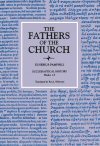
Eusebius was commonly known among the ancients as Eusebius of Caesarea or Eusebius Pamphili. The first designation arose from the fact that he was bishop of Caesarea for many years; the second from the fact that he was a close friend and admirer of Pamphilus, a proselyte of Caesarea and a martyr. At least 40 contemporaries bore the same name, among which the most famous were Eusebius of Samosata—and so arose the necessity of distinguishing him from these others by specific designation.
The year of the Edict of Milan, which divides the first from the second epoch of Church history, does like service for the life and for the literary medium of the Church's first historian. According to the growing assent of scholars, 313 marks off chronologically the Alexandrian from the Byzantine period of Greek literature, and it is 313 that cleaves into uneven but appropriate parts that career of Eusebius Pamphilil. In training and in literary taste, Eusebius belongs to the earlier time. Officially and in literary productivity, he belongs to the later. It was shortly after 313 that Eusebius became a bishop, as it was, for the most part, after 313 that his works were actually composed. Of events contemporary with these later years, Eusebius recorded much that is valued, but it is for what he tells of the earlier period—of the days before the Peace of the Church—that he looms so large in the history of history and of literature. Through him—through him almost alone—are preserved to us the feeble memories of an age that died with himself.
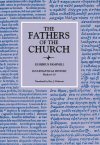
Ecclesiastical History, Books 6–10
- Author: Eusebius Pamphili
- Translator: Roy J. Deferrari
- Series: Fathers of the Church
- Publisher: Catholic University of America Press
- Publication Date: 1955
- Pages: 337
Eusebius was commonly known among the ancients as Eusebius of Caesarea or Eusebius Pamphili. The first designation arose from the fact that he was bishop of Caesarea for many years; the second from the fact that he was a close friend and admirer of Pamphilus, a proselyte of Caesarea and a martyr. At least 40 contemporaries bore the same name, among which the most famous were Eusebius of Samosata—and so arose the necessity of distinguishing him from these others by specific designation.
The year of the Edict of Milan, which divides the first from the second epoch of Church history, does like service for the life and for the literary medium of the Church's first historian. According to the growing assent of scholars, 313 marks off chronologically the Alexandrian from the Byzantine period of Greek literature, and it is 313 that cleaves into uneven but appropriate parts that career of Eusebius Pamphilil. In training and in literary taste, Eusebius belongs to the earlier time. Officially and in literary productivity, he belongs to the later. It was shortly after 313 that Eusebius became a bishop, as it was, for the most part, after 313 that his works were actually composed. Of events contemporary with these later years, Eusebius recorded much that is valued, but it is for what he tells of the earlier period—of the days before the Peace of the Church—that he looms so large in the history of history and of literature. Through him—through him almost alone—are preserved to us the feeble memories of an age that died with himself.
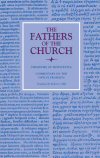
Commentary on the Twelve Prophets
- Author: Theodore of Mopsuestia
- Translator: Robert C. Hill
- Series: Fathers of the Church
- Publisher: Catholic University of America Press
- Publication Date: 2004
- Pages: 448
Friend of John Chrysostom and pupil of Diodore of Tarsus, the founder of the method of exegesis practiced in Antioch, Theodore was appointed bishop of Mopsuestia in Cilicia in 392. His pedigree thus seems impeccable, as was his early reputation as a commentator on the Bible, which earned him the sobriquet “The Interpreter.” More than one modern scholar has been prepared to class Theodore as “the foremost exponent of Antiochene exegesis.” Yet not long after his death in 428—coincidentally, but significantly, the year Nestorius acceded to the see of Constantinople—Theodore became the object of intemperate criticism by the likes of Cyril of Alexandria for his Christological views. His works were condemned by the fifth ecumenical council of 553, and only the Commentary on the Twelve Prophets, here appearing in English for the first time, survives entirely in Greek.
Does Theodore deserve either or both of these extreme assessments? Why did his adversaries allow this one work to survive the flames untouched? Is it because, as has been said in facile repetition, “it contains nothing of Christological import?” The truth emerging from a reading of the Commentary is that both views are wide of the mark. Theodore does not entertain a Christological interpretation of verse after verse in the manner of his Alexandrian contemporary Didymus, but he situates these twelve prophetic figures from the eighth to the sixth century of Israel’s history within an overall Christological perspective. True to his school’s accent on historia, however, he prefers to look for a factual basis to their prophecy (a problem in the case of Jonah), is less sensitive to the moving imagery of a Hosea or a Micah than modern readers would appreciate, and is unfamiliar with the genre of apocalyptic, which appears especially in Joel and Zechariah. Theodoret of Cyrus in the decades after Theodore's death had his works open before him as he commented on prophets, just as modern commentators will also appreciate his work.
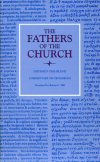
Commentary On Zechariah
- Author: Didymus the Blind
- Translator: Robert C. Hill
- Series: Fathers of the Church
- Publisher: Catholic University of America Press
- Publication Date: 2006
- Pages: 383
The book of Zechariah is “the longest and most obscure” of the Twelve Minor Prophets, Jerome remarked. That may have been the reason why in 386 he visited the Alexandrian scholar Didymus the Blind and requested a work on this prophet. Though long thought to be lost, the work was rediscovered in 1941 at Tura outside Cairo along with some other biblical commentaries. As a result we have in our possession a commentary on Zechariah by Didymus that enjoys particular distinction as his only complete work on a biblical book extant in Greek whose authenticity is established, which comes to us by direct manuscript tradition, and has been critically edited. Thus it deserves this first appearance in English.
A disciple of Origen, whose work on Zechariah reached only to chapter five and is no longer extant, Didymus’s commentary on this apocalyptic book illustrates the typically allegorical approach to the biblical text that we associate with Alexandria. Even Cyril of Alexandria in the next generation will lean rather to the historical style of commentary found in the Antiochene scholars Theodore and Theodoret, whose works on the Twelve are also extant and who had Didymus open before them. Didymus alone offers his readers a wide range of spiritual meanings on the obscure verses of Zechariah, capitalizing on his extraordinary familiarity with Holy Writ (despite his disability), and proceeding on a process of interpretation-by-association, frequently invoking also etymology and number symbolism to plumb the meaning of the text. No wonder he remarks, “The reader who understands it is a seer;” such is the richness of the hermeneutical offering.
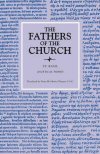
Ascetical Works
- Author: Basil of Caesarea
- Translator: M. Monica Wagner
- Series: Fathers of the Church
- Publisher: Catholic University of America Press
- Publication Date: 1950
- Pages: 537
His zealous and intrepid defense of the orthodox faith and his contribution to handling the external affairs of the Eastern Church were by no means the whole service to which St. Basil the Great devoted his considerable talents. His life both exemplified and shaped the ascetical movement of his time. After renouncing a brilliant career as rhetorician, he traveled widely, studying the various forms of asceticism practiced in Eastern Christendom. On his return, he retired in the year 358 to a place near Neocaesarea to put into practice the best of what he had seen, and there disciples soon joined him. When his friend Gregory of Nazianzus visited him there in 358, he began to write his Rules and other works that have had great importance in promoting and regulating the common life of monasticism. This life, regulated and freed from excess, as an expression of the law of charity was to be the monk’s path to union with God. Basil’s concept of the monastic ideal, socially directed and moderate without being lax, became the fundamental concept of Greek and Slavonic monasticism, and it influenced St. Benedict in legislating for Western monasticism.
The ascetical writings of St. Basil contained in this volume, addressed to both monks and laymen, are of prime importance for understanding the role their author played in the Church of the fourth century and, through his influence, still plays today.
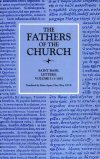
Letters, vol. 1 (1–185)
- Author: Basil of Caesarea
- Translator: Agnes Clare Way
- Series: Fathers of the Church
- Publisher: Catholic University of America Press
- Publication Date: 1951
- Pages: 363
The letters of St. Basil, 368 in number, which comprise the most vivid and most personal portion of his works, give us, perhaps, the clearest insight into the wealth of his rich and varied genius. They were written within the years from 357, shortly before his retreat to the Pontus, until his death in 378, a period of great unrest and persecution of the orthodox Catholic Church in the East. Their variety is striking, ranging from simple friendly greetings to profound explanations of doctrine, from playful reproaches to severe denunciations of transgressions, from kindly recommendations to earnest petitions for justice, from gentle messages of sympathy to bitter lamentations over the evils inflicted upon or existent in the churches.
As may be expected, the style in these letters is as varied as their subject matter. Those written in his official capacity as pastor of the Church, as well as the letters of recommendation and the canonical letters, are naturally more formal in tone, while the friendly letters, and those of appeal, admonition, and encouragement, and, more especially, those of consolation, show St. Basil’s sophistic training, although even in these he uses restraint. He had the technique of ancient rhetoric at his fingertips, but he also had a serious purpose and a sense of fitness of things. To St. Basil’s letters can be ascribed the qualities he attributed to the heartily approved book written by Diodorus, which qualities may be summed up as fullness of thought, clearness, simplicity, and naturalness of style. He himself disapproved of a too ornate style and carefully avoided it. His early education, however, had trained him for the use of rich diction and varied and charming figures, and, when the occasion warranted it, he proved himself a master in their use.
Whether we look at them from an historical, an ecclesiastical, or a theological point of view, the letters are an important contribution.
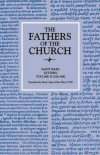
Letters, vol. 2 (186–368)
- Author: Basil of Caesarea
- Translator: Agnes Clare Way
- Series: Fathers of the Church
- Publisher: Catholic University of America Press
- Publication Date: 1955
- Pages: 386
The letters of St. Basil, 368 in number, which comprise the most vivid and most personal portion of his works, give us, perhaps, the clearest insight into the wealth of his rich and varied genius. They were written within the years from 357, shortly before his retreat to the Pontus, until his death in 378, a period of great unrest and persecution of the orthodox Catholic Church in the East. Their variety is striking, ranging from simple friendly greetings to profound explanations of doctrine, from playful reproaches to severe denunciations of transgressions, from kindly recommendations to earnest petitions for justice, from gentle messages of sympathy to bitter lamentations over the evils inflicted upon or existent in the churches.
As may be expected, the style in these letters is as varied as their subject matter. Those written in his official capacity as pastor of the Church, as well as the letters of recommendation and the canonical letters, are naturally more formal in tone, while the friendly letters, and those of appeal, admonition, and encouragement, and, more especially, those of consolation, show St. Basil’s sophistic training, although even in these he uses restraint. He had the technique of ancient rhetoric at his fingertips, but he also had a serious purpose and a sense of fitness of things. To St. Basil’s letters can be ascribed the qualities he attributed to the heartily approved book written by Diodorus, which qualities may be summed up as fullness of thought, clearness, simplicity, and naturalness of style. He himself disapproved of a too ornate style and carefully avoided it. His early education, however, had trained him for the use of rich diction and varied and charming figures, and, when the occasion warranted it, he proved himself a master in their use.
Whether we look at them from an historical, an ecclesiastical, or a theological point of view, the letters are an important contribution.
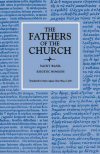
Exegetic Homilies
- Author: Basil of Caesarea
- Translator: Agnes Clare Way
- Series: Fathers of the Church
- Publisher: Catholic University of America Press
- Publication Date: 1963
- Pages: 394
These exegetical homilies explore numerous Psalms and the Hexaemeron—and ancient theological treatise on the six-day creation account. These writings on the Hexaemeron are the earliest written and were noted to be extremely popular among the educated Christians of his era, and display a profound devotion to God and evidence of his goodness in the workings of creation.
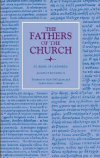
Against Eunomius
- Author: Basil of Caesarea
- Translators: M. DelCogliano and A. Radde-Gallwitz
- Series: Fathers of the Church
- Publisher: Catholic University of America Press
- Publication Date: 2011
- Pages: 222
Basil of Caesarea is considered one of the architects of the Pro-Nicene Trinitarian doctrine adopted at the Council of Constantinople in 381, which eastern and western Christians to this day profess as “orthodox.” Nowhere is his Trinitarian theology more clearly expressed than in his first major doctrinal work, Against Eunomius, finished in 364 or 365 CE. Responding to Eunomius, whose Apology gave renewed impetus to a tradition of starkly subordinationist Trinitarian theology that would survive for decades, Basil’s Against Eunomius reflects the intense controversy raging at that time among Christians across the Mediterranean world over who God is.
In this treatise, Basil attempts to articulate a theology both of God’s unitary essence and of the distinctive features that characterize the Father, Son, and Holy Spirit—a distinction that some hail as the cornerstone of “Cappadocian” theology. In Against Eunomius, we see the clash not simply of two dogmatic positions on the doctrine of the Trinity, but of two fundamentally opposed theological methods. Basil’s treatise is as much about how theology ought to be done and what human beings can and cannot know about God as it is about the exposition of Trinitarian doctrine. Thus Against Eunomius marks a turning point in the Trinitarian debates of the fourth century, for the first time addressing the methodological and epistemological differences that gave rise to theological differences. Amidst the polemical vitriol of Against Eunomius is a call to epistemological humility on the part of the theologian, a call to recognize the limitations of even the best theology.
While Basil refined his theology through the course of his career, Against Eunomius remains a testament to his early theological development and a privileged window into the Trinitarian controversies of the mid-fourth century.
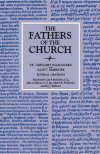
Funeral Orations
- Author: Gregory of Nazianzus
- Translator: Leo P. McCauley
- Series: Fathers of the Church
- Publisher: Catholic University of America Press
- Publication Date: 1953
- Pages: 367
The Christian funeral oration is one of the most elaborate of Christian literary forms. It represents an attempt to adapt to Christian use a pagan Greek form with many hundreds of years behind it. . . . The Christian masterpieces presented in this volume reflect a long, rich, and varied pagan literary tradition in East and West, and at the same time exhibit modifications and new elements which give them their specific Christian character.
The volume presents the most generally admired ancient Christian funeral orations—four from the Greek (those of St. Gregory Nazianzen), four from the Latin (those of St. Ambrose of Milan). From the Bishop of Nazianzen, we have words spoken in honor of three kinsmen, his father, a brother, and a sister, and of the great St. Basil, Bishop of Caesarea. Two of the orations from the lips of St. Ambrose are likewise for a kinsman, his brother Satyrus, while the other two are for wearers of the purple, the youthful Valentinian II and the emporor Theodosius.
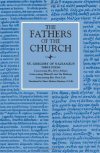
Three Poems
- Author: Gregory of Nazianzus
- Translator: Denis Molaise Meehan
- Series: Fathers of the Church
- Publisher: Catholic University of America Press
- Publication Date: 1987
- Pages: 154
Raised in a multi-generational Christian family, Gregory of Nazianzus was also well-educated, well-traveled, and tutored in almost every discipline of the Greek arts, philosophies, sciences, and literatures. Among his studies must have included Homer, Hesiod, Apollonius of Rhodes, Thucydides, Plutarch, Herodotus, Lucian, Socrates, Plato, Aristotle—the list goes on. The numerous poems written by Gregory had a profound influence over Byzantine hymnology, although, beyond that, they largely provide a treasure trove of autobiographical and historical data. The poem Concerning His Own Life is the earliest known Christian autobiography, and probably had a direct influence on Augustine’s Confessions.
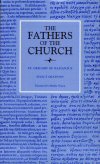
Select Orations
- Author: Gregory of Nazianzus
- Translator: Martha Vinson
- Series: Fathers of the Church
- Publisher: Catholic University of America Press
- Publication Date: 2004
- Pages: 274
This translation makes available nineteen orations by the fourth-century Cappadocian father Gregory of Nazianzus. Most are appearing here in English for the first time. These homilies span all the phases of Gregory’s ecclesiastical career, beginning with his service as a parish priest assisting his father, the elder Gregory, in his hometown of Nazianzus in the early 360s, to his stormy tenure as bishop of Constantinople from 379 to 381, to his subsequent return to Nazianzus and role as interim caretaker of his home church (382–383). Composed in a variety of rhetorical formats such as the lalia and encomium, the sermons treat topics that range from the purely theological to the deeply personal.
Up until now, Gregory has been known primarily for his contributions as a theologian, indifferent to the social and political concerns that consumed his friend Basil. This view will change. It has been due in large measure to the interests and prejudices of the nineteenth-century editors who excluded the sermons translated here from the Select Library of Nicene and Post-Nicene Fathers of the Church. This new translation will help the English-speaking reader appreciate just how deeply Gregory was engaged in the social and political issues of his day.
Exemplifying the perfect synthesis of classical and Christian paideia, these homilies will be required reading for anyone interested in late antiquity. The introduction and notes accompanying the translation will assist both the specialist and the general reader as they seek to navigate the complex environment in which Gregory lived and worked.
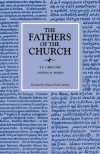
Ascetical Works
- Author: Gregory of Nyssa
- Translator: Virginia Woods Callahan
- Series: Fathers of the Church
- Publisher: Catholic University of America Press
- Publication Date: 1967
- Pages: 311
In the Christian world of the fourth century, the family of St. Gregory of Nyssa was distinguished for its leadership in civic and religious affairs in the region of the Roman Empire known as Pontus. Cardinal Newman, in an essay on the trials of St. Basil, refers to the family circle which produced these two eminent Fathers as “a sort of nursery of bishops and saints.” From St. Gregory’s life of his sister, St. Macrina, a work included in this volume, we learn of the fortitude of the three preceding generations. On her death-bed, St. Macrina, recalling details of their family history, speaks of a great-grandfather martyred and all his property confiscated, and grandparents deprived of their possessions at the time of the Dioceltian persecutions. Their father, Basil of Caesarea, a successful rhetorician, outstanding for his judgment and well known for the dignity of his life, died leaving to his wife, Emmelia, the care of four sons and five daughters. St. Gregory praises his mother for her virtue and for her eagerness to have her children educated in Holy Scripture. After managing their estate and arranging for the future of her children, she was persuaded by St. Macrina to retire from the world and to enter a life common with her maids as sisters and equals. This community of women would have been a counterpart of the monastery founded nearby by St. Basil on the banks of the Iris River. In a moving scene, St. Gregory tells of his mother's death at a rich old age in the arms of her oldest and youngest children, Macrina and Peter. Blessing all of her children, she prays in particular for the sanctification of these two who were, indeed, later canonized as saints. Newman notes the strong influence of the women in the family, and in one of his letters, St. Basil gives credit to his mother and his grandmother, the elder Macrina, for his clear and steadfast idea of God.
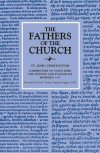
Commentary on Saint John the Apostle and Evangelist: Homilies 1–47
- Author: John Chrysostom
- Translator: Thomas Aquinas Goggin
- Series: Fathers of the Church
- Publisher: Catholic University of America Press
- Publication Date: 1957
- Pages: 505
The homilies on St. John’s Gospel come from the period in which Chrysostom attained his greatest fame as pulpit orator, the years of his simple priesthood at Antioch (386–397). This was the peaceful period in Chrysostom’s life that preceded his elevation to the episcopacy as patriarch of Constantinople (398), wherein adverse imperial and ecclesiastical reaction to his program of moral reform led to his deposition, banishment, and all but martyr’s death (407).
The 88 homilies, which date from about 390, work systematically through the text of St. John’s Gospel and thus form a commentary upon it. In his exposition Chrysostom reflects his youthful Antiochene training in the interpretation of Holy Scripture through his emphasis upon the literal or historical meaning of the sacred text. The exposition focuses sharply on practical morality and thus often supplies telling information about fourth-century life and times. The homilies show the flowering of Chrysostom’s intensive study of rhetoric and are especially commendable for their command of imagery. The first 47 homilies carry Chrysostom’s commentary through chap. 6.54–72; the remaining 41, extending the commentary through to the end of the Gospel, are contained in vol. 41 of this series.
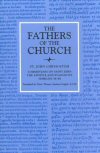
Commentary on Saint John the Apostle and Evangelist: Homilies 48–88
- Author: John Chrysostom
- Translator: Thomas Aquinas Goggin
- Series: Fathers of the Church
- Publisher: Catholic University of America Press
- Publication Date: 1959
- Pages: 507
The homilies on St. John’s Gospel come from the period in which Chrysostom attained his greatest fame as pulpit orator, the years of his simple priesthood at Antioch (386–397). This was the peaceful period in Chrysostom’s life that preceded his elevation to the episcopacy as patriarch of Constantinople (398), wherein adverse imperial and ecclesiastical reaction to his program of moral reform led to his deposition, banishment, and all but martyr’s death (407).
The 88 homilies, which date from about 390, work systematically through the text of St. John’s Gospel and thus form a commentary upon it. In his exposition Chrysostom reflects his youthful Antiochene training in the interpretation of Holy Scripture through his emphasis upon the literal or historical meaning of the sacred text. The exposition focuses sharply on practical morality and thus often supplies telling information about fourth-century life and times. The homilies show the flowering of Chrysostom’s intensive study of rhetoric and are especially commendable for their command of imagery. The first 47 homilies carry Chrysostom’s commentary through chap. 6.54–72; the remaining 41, extending the commentary through to the end of the Gospel, are contained in vol. 41 of this series.
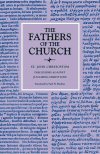
Discourses Against Judaizing Christians
- Author: John Chrysostom
- Translator: Paul W. Harkins
- Series: Fathers of the Church
- Publisher: Catholic University of America Press
- Publication Date: 1979
- Pages: 348
St. John Chrysostom’s Discourses Against Judaizing Christians are eight homilies or sermons with a unifying theme: the correction of certain abuses in a fourth-century Christian community. Judged by modern tastes the Discourses may seem lengthy, and Chrysostom himself admits that they taxed his energies when he complains of having become hoarse. In Antioch of the late fourth century two highly divisive forces contributed to deteriorating Judaeo-Christian relations: very successful Jewish proselytizing, and Christian Judaizing. Both activities profoundly disturbed a vigilant leader and eloquent preacher such as Chrysostom was.
These Discourses, frequently interrupted by applause from the audience, present in their historical context one facet of the deteriorating relations. Antedating Chrysostom by some two centuries, emerging views that the Jews were a people cursed and dispersed in punishment for their unbelief and deicide were gaining credence; witness some statements by Irenaeus in Lyons and Tertullian in northern Africa. In the course of time certain passages of sacred Scripture began to be reinterpreted, when occasion presented itself, in such a way as to endow the polemics with divine authority.
A simplistic view of the complex problem of anti-Semitism raised the cry, almost a century ago, that the Church nurtures hatred against the Jews and at the same time protected them from the fury she had unleashed. However, on October 28, 1965, Vatican Council II issued a decree: Declaration on the Church’s Attitude Toward Non-Christian Religions (cf. Acta apostolicae sedis 58 (1966) 740–744). Therein the Council officially re-affirmed the common religious patrimony of Jews and Christians. It clearly rejected any alleged collective guilt of the Jewish people for the death of Christ and their alleged rejection of God.
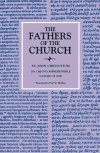
On the Incomprehensible Nature of God
- Author: John Chrysostom
- Translator: Paul W. Harkins
- Series: Fathers of the Church
- Publisher: Catholic University of America Press
- Publication Date: 1984
- Pages: 371
10 of the 12 homilies of St. John Chrysostom presented here were delivered at Antioch over a period of several years beginning in AD 386. The final two homilies were delivered in 398 after Chrysostom became patriarch of Constantinople.
All but one of the homilies aim at refuting the Anomoeans, heretics who revived the most radical tenets of Arius and blatantly claimed that man knows God in the very same way that God knows himself. Chrysostom’s refutations and instructions to the faithful are based on the Scriptures rather than on human reasoning. He departed from this series of refutations only in the sixth homily, which he delivered on December 20, 386, again at Antioch. It consists of a panegyric of St. Philogonius, bishop of Antioch ca. AD 319–323, who before his episcopal ordination had led a very exemplary life, practiced law and contracted a marriage that was blessed with a daughter.
In addition to their theological content, these homilies contain many other points of interest. On one occasion, people applauded the speaker and were very attentive to the homily but then left the church so that when Christ is about to appear in the holy mysteries the church becomes empty (Hom III.32; Hom VII.2). During another homily, pickpockets plied their trade so that Chrysostom urged “let no one come into the church carrying money” (Hom IV.46). Chrysostom also indicates that people kept talking to one another at the sacred moment when Christ becomes present (Hom IV.36). He also mentions that chariot races often proved more enticing than going to church (Hom VII.1). Finally, valuable information on fourth-century Eastern liturgies is found in Hom III.41, 42, and Hom IV.32.
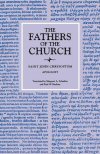
Apologist
- Author: John Chrysostom
- Translator: Margaret A. Schatkin
- Series: Fathers of the Church
- Publisher: Catholic University of America Press
- Publication Date: 1985
- Pages: 310
Apologist is the English translation of two of Chrysostom’s treatises, written about 378 and 382, aimed at provoking the divinity of Jesus Christ.
In Discourse in Blessed Babylas and Against the Greeks, Chrysostom responds to specific attacks on Christianity by such philosophers as Porphyry, using historical narrative and the arguments of fulfilled prophecies to prove Christ’s divinity. Chrysostom relates the story of St. Babylas, bishop and martyr, who defended the Church against an evil emperor and whose relics produced sobriety at Daphne and silenced the oracle of Apollo. Although a product of Christianized sophistic rhetoric, the discourse on Babylas furnishes interesting new material on the development of the veneration of relics and church-state relations in the third and fourth centuries. Schatkin’s translation is based on her critical edition prepared for Sources Chrétiennes.
The Demonstration Against the Pagans that Christ Is God is one of Chrysostom’s earlier works and one of his basic contributions to apologetics. Chrysostom argues for Christ’s divinity in the fulfillment of Old Testament prophecies and in Christ’s own prophecies—particularly those on the phenomenal growth of the Church—to provide proof of a power that can be only divine. Harkins’ translation is based on the unpublished critical edition of Norman G. McKendrick.
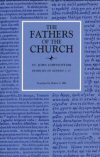
Homilies on Genesis, 1–17
- Author: John Chrysostom
- Translator: Robert C. Hill
- Series: Fathers of the Church
- Publisher: Catholic University of America Press
- Publication Date: 1986
- Pages: 255
This translation makes available for the first time in English one of the most significant Old Testament commentaries of the patristic period. St. John Chrysostom’s extant works outnumber those of any other Father of the East; in the West, only Augustine produced a larger corpus. Of Chrysostom’s more than 600 exegetical homilies, however, only those on the New Testament have previously been translated into English.
The Genesis homilies, his richest Old Testament series, reveal a theologian, pastor, and moralist struggling to explain some of the most challenging biblical material to his congregation in Antioch. He admonishes them to “apply yourself diligently to the reading of Sacred Scripture, not only when you come along here, but at home,” encourages spiritual discourse, and frequently envisages them leaving church reminiscing on the day's sermon. While critical exegetical details go without mention and Chrysostom was limited to the Greek version of the Old Testament in his studies, his oratory has been judged golden and his theology profound. He was a preacher satisfied with commenting on Scripture with his moral purpose always to the fore.
Chrysostom studied the Scriptures with Diodore of Tarsus, a distinguished exegete known from fragments of his commentaries on Genesis and Psalms, and a polemic style developed from his pastoral concern to protect his congregation from the dangerous influences of fourth-century Antioch. Most importantly, he shared the Antiochene school’s insistence on the literal sense of Scripture and their unwillingness to engage in allegorical interpretation. As such, his Genesis homilies constitute a milestone in the history of biblical interpretation.
This first of several volumes on Genesis contains homilies 1–17, delivered in Antioch before Chrysostom moved to Constantinople in 398. Robert C. Hill’s thorough introduction highlights Chrysostom’s significance as a scriptural commentator and provides the basis for an interesting comparison with modern commentators, such as Von Rad and Speiser.
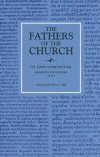
Homilies on Genesis, 18–45
- Author: John Chrysostom
- Translator: Robert C. Hill
- Series: Fathers of the Church
- Publisher: Catholic University of America Press
- Publication Date: 1990
- Pages: 483
John Chrysostom, called the “golden-mouthed” for his eloquent preaching, continues in this second volume of the 67 Genesis homilies to provide instruction for the moral reformation of the Christians of Antioch. He continues in Homily 18 with Genesis 3 and finishes in Homily 45 with Genesis 20. They seem to have been delivered perhaps as early as 385, half just before and during Lent and the remainder, from Homily 33 onward, after Pentecost.
That Chrysostom favored Antiochene exegesis is clear from his exhortation at the beginning of Homily 20 to “take up the thread of the reading and apply. . . the teaching from the passage.” “You see,” he writes, “there is not even a syllable or even one letter contained in Scripture which does not have great treasure concealed in its depth.” He artfully interprets the literal spiritual meaning of this treasure for his congregation through inspiring and colorful exegesis.
It was Chrysostom’s pastoral responsibility to guide his congregation by means of homiletic exegesis. He urged his listeners to take note of the instruction and to give attention to the correction of their own daily lives so as to “proceed to the enjoyment of salvation.” The theme of the good man Noe, who remained unaffected by the universal decline of mankind into wickedness, provides the example for the moral improvement of his listeners in Homilies 23–29, as does the hospitality of Abraham in Homilies 41–45.
The Genesis homilies reveal Chrysostom as commentator, preacher, moralist, and profoundly theological and precise exegete of Scripture, the truth of which he teaches for the betterment of this congregation.
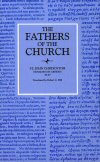
Homilies on Genesis, 46–67
- Author: John Chrysostom
- Translator: Robert C. Hill
- Series: Fathers of the Church
- Publisher: Catholic University of America Press
- Publication Date: 1982
- Pages: 288
St. John Chrysostom delivered his Homilies on Genesis sometime between AD 385 and AD 388, while yet a priest at Antioch. In the homilies in this volume, the last of three, Chrysostom concludes his examination of the lives and virtues of the Old Testament patriarchs Abraham, Isaac, Jacob, and Joseph as recounted in the last three chapters of Genesis.
Known for his eloquent preaching, Chrysostom delivered these final 22 homilies after Pentecost. His motive for examining the accounts of the lives of the patriarchs is to show how the just forebears of the Israelites, in a time when both the law and the Gospel were yet unpreached, were able to live Christian lives with only simple trust in God and the balanced, almost ingenuous manners of antiquity. His interest in the events and characters of Genesis is largely moral, even moralistic; he tends to see Scripture as hagiography. His style of commentary, although not really thorough exegesis, arises out of his deep conviction of the divine inspiration of Scripture—hence the habitual attention to detail, “not idly or to no purpose” being his frequent comment on the precision of the text.
As an exegete, Chrysostom may seem disappointing to those grounded in the methods of modern biblical scholarship, since he largely ignores any sense of Scripture other than the literal and is generally unaware of how to resolve difficulties and appreciate subtleties that a knowledge of the original text would provide. However, what lacks in scientific accuracy he more than compensates for with his earnest practice of pastoral care.
This final volume of the homilies includes a general index and an index of biblical citations, the latter indicating the rich scriptural diet Chrysostom’s congregation—who came daily for his homilies—enjoyed.
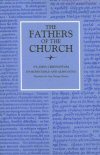
On Repentance and Almsgiving
- Author: John Chrysostom
- Translator: Gus George Christo
- Series: Fathers of the Church
- Publisher: Catholic University of America Press
- Publication Date: 1998
- Pages: 177
St. John Chrysostom delivered nine homilies on repentance in Antioch of Syria sometime between 386 and 387. With conviction and certitude, he preached that repentance was a necessity for both the sinner and the righteous man. This volume presents Chrysostom’s homilies on repentance and includes a sermon on almsgiving that he preached in Antioch during the winter months in 387.
Chrysostom’s work reveals that repentance is an indestructible pillar of the All-Holy, Universal and Immutable Church of Christ. He believed that repentance is the liturgical tool that rejuvenates sinners and admits them into the life-giving Eucharist where they experience fully and dynamically the concrete presence of God.
The powers of repentance have rich biblical roots, and Chrysostom masterfully weaves his teaching with a plethora of Old and New Testament citings. From Scripture, the reader learns that repentance is never confined to the eucharistic context—it becomes a way of life for the believer. The daily applications of repentance, such as almsgiving, fasting, remorse over personal sins, humility, prayer, and attending Church, suggest that a person’s entire life has an ecclesial character. Chrysostom preached that the whole experience of a true life in Christ is repentance that culminates in metanoia—the total change and renewal from the heart and mind of sin to “the mind of Christ” (1 Cor. 2:16).
In his introduction to the homilies, Fr. Gus Christo includes a succinct biography of Chrysostom within which he sets the homilies in their chronological context. He also provides an overview of repentance and discusses the ecclesiological nature of Chrysostom’s theology.
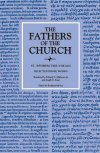
Selected Prose Works
- Author: Ephrem the Syrian
- Translator: Edward G. Mathews, Jr.
- Series: Fathers of the Church
- Publisher: Catholic University of America Press
- Publication Date: 1994
- Pages: 423
This volume presents for the first time in the Fathers of the Church series the work of an early Christian writer who did not write in either Greek or Latin. It offers new English translations of selected prose works by St. Ephrem the Syrian (c. AD 309–373). The volume contains St. Ephrem’s Commentary on Genesis, Commentary on Exodus, Homily on Our Lord, and Letter to Publius. The translators have enhanced the volume with a general introduction, extensive bibliography, and specific introductions to each of the works. Together these features provide an overview of the major scholarship on St. Ephrem and Syriac Christianity.
St. Ephrem, the “Harp of the Spirit,” composed prose commentaries and sermons of skillfull charmand grace, in addition to beautiful hymns, during the time he spent teaching at his native Nisibis and at Edessa in Syria. In the two commentaries presented here, Ephrem focuses only on portions of the sacred text that had a particular theological significance for him, or whose orthodox interpretation needed to be reasserted in the face of contemporary heterodox ideas. He does not provide a continuous, verse by verse exposition. The elaborate rhetorical figures and stylistic devices of the Homily on Our Lord and Letter to Publius succeed in creating language and imagery nearly as striking as Ephrem’s poetry.
St. Ephrem marshaled his considerable theological and rhetorical talent to challenge the appeal that the doctrines of the Arians, Manicheans, Marcionites, and the followers of Bardaisan might have had to the minds and hearts of Syrian Christians. In the face of their rational systems, his was the voice that insisted on the incomprehensibility of the divine nature.
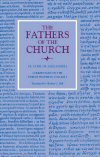
Commentary on the Twelve Prophets, vol. 1
- Author: Cyril of Alexandria
- Translator: Robert C. Hill
- Series: Fathers of the Church
- Publisher: Catholic University of America Press
- Publication Date: 2007
- Pages: 327
Cyril, Bishop of Alexandria (412–444), is best known as a protagonist in the christological controversy of the second quarter of the fifth century. Readers may be surprised therefore to find such polemic absent from this early work on the twelve minor prophets of the Old Testament. Another possibly unexpected feature of this Alexandrian commentary is its focus on historical exegesis, which reveals Cyril’s serious interest in the fortunes of the people of Israel and Judah in the centuries preceding and following the exile. Unlike his predecessor Didymus the Blind, Cyril abjures an approach that dismisses the historicity of the text (as in his opening defense of Hosea’s marriage), and he proceeds to other levels of interpretation, moral and spiritual, only after a preliminary examination of the historical.
Indebted to the diverse approaches of Didymus, Jerome, and Theodore, Cyril appears in this work as a balanced commentator, eclectic in his attitude and tolerant of alternative views. Although he displays an occasional uncertainty in his grasp of historical and geographical details, as well as an inclination to verbosity, Cyril has conspicuously influenced the exegesis of his younger contemporary Theodoret of Cyrus, and has made a vital contribution to the development of biblical interpretation in the church.
Cyril of Alexandria was the Patriarch of Alexandria from 412 to 444. His uncle, Pope Theophilus of Alexandria, was Patriarch of Alexandria from 385 to 412. Cyril was well educated, wrote extensively, and was a leading figure in the First Council of Ephesus in 431, the third ecumenical council of the early Christian Church. The council convened amid disputes over the teachings of Nestorius, Patriarch of Constantinople, and Cyril led the charges of heresy against Nestorius. Nestorius’ teachings were condemned by the council, leading to the formation of separate denominations that broke from the Orthodox church.
Cyril of Alexandria is venerated as a saint in the Roman Catholic Church, Eastern Orthodox Church, Oriental Orthodox Church, Anglican Church, and Lutheran Church.
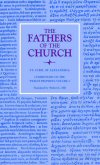
Commentary on the Twelve Prophets, vol. 2
- Author: Cyril of Alexandria
- Translator: Robert C. Hill
- Series: Fathers of the Church
- Publisher: Catholic University of America Press
- Publication Date: 2008
- Pages: 442
Cyril of Alexandria’s contributions to theology are not confined to his prominent role in the fifth-century christological conflict, but are also vital to the development of biblical exegesis. Drawing insights from older contemporaries, Cyril examines in depth the historical contexts of prophetic texts, utilizing his knowledge of events and geographical locations in deriving his interpretations. Imperfect though his knowledge is, his approach is worthy of admiration because it combines historical analysis with moral and spiritual perspectives in achieving a balance that cannot be labeled as either “Alexandrian” or “Antiochene.” This balance is assured by the broad diversity among Cyril’s sources, namely, Didymus the Blind, Jerome, and Theodore of Mopsuestia. Cyril in turn has exerted a direct influence on Theodoret of Cyrus, thus forging a link in the succession of patristic exegetical developments.
For Cyril, as for the Fathers in general, the internal unity of the Bible guarantees that its texts can be applied to the interpretation of other texts within the scriptural canon. A focal point of Cyril’s interpretation is the relationship between God and his people as it unfolds in the course of history, revealing a sovereign God who, while tolerating no infidelity, perseveres patiently in correcting the errant. This relationship is the basis of a motif that unifies the Old and New Testaments, with the prophets serving as precursors of the Savior; thus their proclamations, though often aimed at the events of their own times, speak to believers of all eras.
Cyril of Alexandria was the Patriarch of Alexandria from 412 to 444. His uncle, Pope Theophilus of Alexandria, was Patriarch of Alexandria from 385 to 412. Cyril was well educated, wrote extensively, and was a leading figure in the First Council of Ephesus in 431, the third ecumenical council of the early Christian Church. The council convened amid disputes over the teachings of Nestorius, Patriarch of Constantinople, and Cyril led the charges of heresy against Nestorius. Nestorius’ teachings were condemned by the council, leading to the formation of separate denominations that broke from the Orthodox church.
Cyril of Alexandria is venerated as a saint in the Roman Catholic Church, Eastern Orthodox Church, Oriental Orthodox Church, Anglican Church, and Lutheran Church.
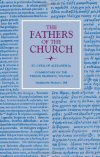
Commentary on the Twelve Prophets, vol. 3
- Author: Cyril of Alexandria
- Translator: Robert C. Hill
- Series: Fathers of the Church
- Publisher: Catholic University of America Press
- Publication Date: 2012
- Pages: 368
This final volume in a series of three contains Cyril’s commentary on Zephaniah, Haggai, Zechariah, and Malachi. Applying his knowledge of ancient Israelite history in his analysis of the immediate context for each of these prophetic books, Cyril believes that Zephaniah was addressed to the residents of Jerusalem in the years preceding the Babylonian Exile, and the other three were addressed to a newly repatriated, post-exilic nation.
An emphasis on theodicy is a primary theme of this book. God’s love for humankind, says Cyril, is expressed in the many warnings sent through the prophets and in the ample amount of time that God allows for people to repent. When no repentance ensues, God sends harsh but just punishments, employing the brutality of enemy nations as his instruments, yet always doing so with the loving purpose of returning his people to himself.
Cyril’s focus on the historical details of the Old Testament is matched by his concern for the Church of his own day. Where the prophetic oracles mention the Jewish priesthood, altar, or sacrifices, Cyril takes the opportunity to exhort Christian priests to preserve their moral purity and to fulfill their liturgical duties with devotion. This extrapolation from the ancient to the contemporary, from Israel to the Church, is compatible with the typological interpretation that Cyril utilizes in conjunction with his literal, historical approach. The Temple is a type, or foreshadowing, of the Church, and the sacrificial lamb of the Passover prefigures Christ. Thus Cyril maintains his connection with the Alexandrian tradition of allegorical exegesis while presenting a balanced, multi-faceted interpretation that applies passages from many other parts of the Bible to extract a wealth of meaning from the prophetic books.
Cyril of Alexandria was the Patriarch of Alexandria from 412 to 444. His uncle, Pope Theophilus of Alexandria, was Patriarch of Alexandria from 385 to 412. Cyril was well educated, wrote extensively, and was a leading figure in the First Council of Ephesus in 431, the third ecumenical council of the early Christian Church. The council convened amid disputes over the teachings of Nestorius, Patriarch of Constantinople, and Cyril led the charges of heresy against Nestorius. Nestorius’ teachings were condemned by the council, leading to the formation of separate denominations that broke from the Orthodox church.
Cyril of Alexandria is venerated as a saint in the Roman Catholic Church, Eastern Orthodox Church, Oriental Orthodox Church, Anglican Church, and Lutheran Church.
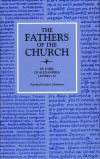
Letters, 1–50
- Author: Cyril of Alexandria
- Translator: John I. McEnerney
- Series: Fathers of the Church
- Publisher: Catholic University of America Press
- Publication Date: 1987
- Pages: 254
Cyril of Alexandria famously took up the debate against Nestorius on the theological interpretation of the deity of Christ, a number of which are addressed in these volumes. This fifth-century Christological controversey comprises most of the teaching of these letters, notably even letters not addressed to Nestorius. The conflict with Nestorius eventually brought Nestorius to condemnation after the Council of Ephesus in 431, in which Cyril presides at the request of Pope Celestine. Almost the entire collection here has to do with the controversey surrounding the Council of Ephesus and the schism of bishops on either side of the theological controversey.
Cyril of Alexandria was the Patriarch of Alexandria from 412 to 444. His uncle, Pope Theophilus of Alexandria, was Patriarch of Alexandria from 385 to 412. Cyril was well educated, wrote extensively, and was a leading figure in the First Council of Ephesus in 431, the third ecumenical council of the early Christian Church. The council convened amid disputes over the teachings of Nestorius, Patriarch of Constantinople, and Cyril led the charges of heresy against Nestorius. Nestorius’ teachings were condemned by the council, leading to the formation of separate denominations that broke from the Orthodox church.
Cyril of Alexandria is venerated as a saint in the Roman Catholic Church, Eastern Orthodox Church, Oriental Orthodox Church, Anglican Church, and Lutheran Church.
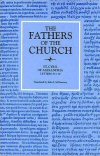
Letters, 51–110
- Author: Cyril of Alexandria
- Translator: John I. McEnerney
- Series: Fathers of the Church
- Publisher: Catholic University of America Press
- Publication Date: 1987
- Pages: 215
Cyril of Alexandria famously took up the debate against Nestorius on the theological interpretation of the deity of Christ, a number of which are addressed in these volumes. This fifth-century Christological controversey comprises most of the teaching of these letters, notably even letters not addressed to Nestorius. The conflict with Nestorius eventually brought Nestorius to condemnation after the Council of Ephesus in 431, in which Cyril presides at the request of Pope Celestine. Almost the entire collection here has to do with the controversey surrounding the Council of Ephesus and the schism of bishops on either side of the theological controversey.
Cyril of Alexandria was the Patriarch of Alexandria from 412 to 444. His uncle, Pope Theophilus of Alexandria, was Patriarch of Alexandria from 385 to 412. Cyril was well educated, wrote extensively, and was a leading figure in the First Council of Ephesus in 431, the third ecumenical council of the early Christian Church. The council convened amid disputes over the teachings of Nestorius, Patriarch of Constantinople, and Cyril led the charges of heresy against Nestorius. Nestorius’ teachings were condemned by the council, leading to the formation of separate denominations that broke from the Orthodox church.
Cyril of Alexandria is venerated as a saint in the Roman Catholic Church, Eastern Orthodox Church, Oriental Orthodox Church, Anglican Church, and Lutheran Church.
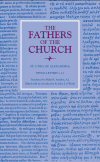
Festal Letters, 1–12
- Author: Cyril of Alexandria
- Translator: Philip R. Amidon
- Series: Fathers of the Church
- Publisher: Catholic University of America Press
- Publication Date: 2009
- Pages: 260
St. Cyril of Alexandria is best known for his role in the Christological disputes of the fifth century. In recent years, however, scholars have turned their attention to Cyril the exegete. Cyril wrote extensive commentaries on nearly every book of the Bible; in fact, two-thirds of his extant corpus is devoted to biblical interpretation. Yet, despite this strong interest in Cyril as theologian and biblical interpreter, his activity as the Patriarch of Alexandria remains obscure. Doctrinal treatises and biblical commentary reveal little of the daily pastoral duties that occupied Cyril during his years as leader of one of ancient Christianity’s most important sees. This new translation of Cyril’s festal letters will help fill these gaps.
Twenty-nine in all, these letters cover all but three of Cyril’s years as bishop. In Alexandria, festal letters functioned primarily as a vehicle for announcing the beginning of Lent and the proper date for the celebration of Easter. They also served an important catechetical purpose by providing the patriarch with an annual opportunity to present his flock with a pastoral version of the theological issues that found more formal and complex expression elsewhere. Thus, Cyril’s Festal Letters offer the modern reader a glimpse into the issues that Cyril himself considered important enough to proclaim to the entire diocese and a sample of how he prepared these ideas for reception by a less sophisticated audience.
These letters illuminate other aspects of the ancient church in Alexandria, including that church’s complex relationship with the Jews and other religious groups, as well as the ways in which the ascetical movement wound its way into the patriarch’s pastoral program. In short, Cyril of Alexandria’s Festal Letters provides modern readers with a rare opportunity to enter the daily reality of the church in ancient Alexandria.
Cyril of Alexandria was the Patriarch of Alexandria from 412 to 444. His uncle, Pope Theophilus of Alexandria, was Patriarch of Alexandria from 385 to 412. Cyril was well educated, wrote extensively, and was a leading figure in the First Council of Ephesus in 431, the third ecumenical council of the early Christian Church. The council convened amid disputes over the teachings of Nestorius, Patriarch of Constantinople, and Cyril led the charges of heresy against Nestorius. Nestorius’ teachings were condemned by the council, leading to the formation of separate denominations that broke from the Orthodox church.
Cyril of Alexandria is venerated as a saint in the Roman Catholic Church, Eastern Orthodox Church, Oriental Orthodox Church, Anglican Church, and Lutheran Church.
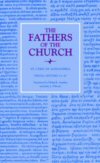
Festal Letters, 13–30
- Author: Cyril of Alexandria
- Series: Fathers of the Church
- Publisher: Catholic University of America Press
- Publication Date: 2013
- Pages: 240
St. Cyril of Alexandria is best known for his role in the Christological controversies of the fifth century. In recent decades, scholars have been attending more carefully to his exegetical legacy. Most of Cyril’s work takes the form of biblical commentary rather than doctrinal treatise. Indeed, during his long career he wrote commentaries on nearly every book of the Bible. Less attention, however, has been given to Cyril’s pastoral work as the Patriarch of Alexandria, perhaps because his commentaries and doctrinal treatises do not reveal much about his daily pastoral duties. Here the Festal Letters are especially helpful.
Twenty-nine in all, these letters cover all but three of Cyril’s years as a bishop. The present volume completes the set. Festal letters were used in Alexandria primarily to announce the beginning of Lent and the date of Easter. They also served a catechetical purpose, however, allowing the Patriarch an annual opportunity to write pastorally not just about issues facing the entire see, but also about the theological issues of the day. Thus, in these letters we catch a glimpse of Cyril the pastor writing about complex theology in an uncomplicated way. These letters also illuminate other realities of the ancient church in Alexandria, especially the relationship with the Jewish community and the rising influence of asceticism.
Cyril of Alexandria was the Patriarch of Alexandria from 412 to 444. His uncle, Pope Theophilus of Alexandria, was Patriarch of Alexandria from 385 to 412. Cyril was well educated, wrote extensively, and was a leading figure in the First Council of Ephesus in 431, the third ecumenical council of the early Christian Church. The council convened amid disputes over the teachings of Nestorius, Patriarch of Constantinople, and Cyril led the charges of heresy against Nestorius. Nestorius’ teachings were condemned by the council, leading to the formation of separate denominations that broke from the Orthodox church.
Cyril of Alexandria is venerated as a saint in the Roman Catholic Church, Eastern Orthodox Church, Oriental Orthodox Church, Anglican Church, and Lutheran Church.
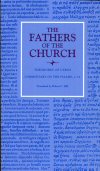
Commentary on the Psalms, 1–72
- Author: Theodoret of Cyrus
- Translator: Robert C. Hill
- Series: Fathers of the Church
- Publisher: Catholic University of America Press
- Publication Date: 2000
- Pages: 451
This volume makes available for the first time in English the major biblical commentary by one of the leading exponents of Antiochene exegesis, Theodoret, bishop of Cyrus. Though originally intended as an opening to his exegetical work—in the manner of his predecessors in this school, Theodore of Mopsuestia and John Chrysostom—Theodoret’s Psalms commentary comes from his later ministry in the decade before the Council of Chalcedon, which he was instrumental in convening. It thus documents current christological and trinitarian concerns and illustrates an Antiochene hermeneutic that rests firmly on the literal sense of the “inspired composition of the mighty David.”
Though commentators less well acquainted with this lengthy work have been ready to dismiss Theodoret as lacking originality, a sounder assessment would acknowledge his willingness to take account of previous work, from both Alexandria and Antioch, and steer a middle course. He deliberately avoids the excesses of allegorical interpretation of Origen, on the one hand, and of the historicism found in Diodore and Theodore, on the other. Moderation and flexibility are the hallmarks of his own approach to the Psalms, to which he comes not as scholar or preacher but as teacher and pastor. He aims simply to offer his readers “some benefit in concentrated form.”
This translation respects the conciseness which the bishop sets as one aim for himself, his other principle being to let the text speak for itself. Theodoret emerges in this work as a measured commentator and balanced exponent of his school’s hermeneutical and theological principles.
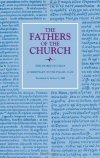
Commentary on the Psalms, 73–150
- Author: Theodoret of Cyrus
- Translator: Robert C. Hill
- Series: Fathers of the Church
- Publisher: Catholic University of America Press
- Publication Date: 2001
- Pages: 395
This volume completes the Commentary on all the Psalms written by Theodoret, bishop of Cyrus, in the decade before the Council of Chalcedon held in 451, “a triumph of Antiochene theology,” in the words of J. N. D. Kelly. The work thus bears the marks of the theological currents of those years, especially as Theodoret was instrumental in convening that Council and was involved in the Christological and trinitarian debates of the period.
Theodoret’s work of commentary offers readers a great spiritual classic that has contributed to Christian spiritual formation and received the attention of eminent commentators from Antioch and Alexandria in the East, and from the likes of Augustine of Hippo in the West. As this volume closes, Theodoret claims modestly to have offered his readers the best of his predecessors’ work (including Alexandrian commentators) together with his own insights into “the Spirit’s hidden mysteries.” He writes as a teacher, not a preacher in his pulpit, with the purpose simply of dispelling ignorance, concerned that “those singing [the Psalter] daily and uttering the words by mouth do not enquire about the force of the ideas underlying the words.”
This translation respects the conciseness which the bishop sets as one aim for himself, his other principle being to let the text speak for itself. Theodoret emerges in this work as a measured commentator and balanced exponent of his school’s hermeneutical and theological principles.
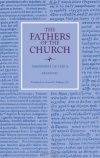
Eranistes
- Author: Theodoret of Cyrus
- Translator: Gerard H. Ettlinger
- Series: Fathers of the Church
- Publisher: Catholic University of America Press
- Publication Date: 2003
- Pages: 291
This translation of a major document in patristic Christology, the first translation since the nineteenth century, is based upon the modern critical edition of Theodoret’s Greek text. Theodoret was the leading theologian of his time in the Antiochene tradition, and in the Eranistes (written in 447) he offers a lengthy exposition of his Christology, coupled with a refutation of the so-called Monophysite Christology that, despite its condemnation at the General Council held at Chalcedon in 451, survives to this day, having been embraced by several large churches of the East. The “Monophysite” controversy caused a tremendous rift between East and West, and the Eranistes portrays the hostility and the stubborn resistance to the thought of others that afflicted both sides in the conflict.
The Eranistes is written in the form of three dialogues between two characters: Orthodox, who represents Theodoret's thought, and Eranistes, who is presented as a heretic. In two dialogues Theodoret argues that the Word of God was immutable and impassible in his divine nature, and that Christ experienced change and passion only in his human nature. A third dialogue argues that, in the union of the divinity and humanity in the one person of the Word incarnate, the natures remained unmixed. To bolster his arguments Theodoret incorporates extensive citations, not only from orthodox ecclesiastical writers, but also from the heretic Apollinarius and the suspected Arian, Eusebius of Emesa. The texts of many of these citations are known only from the Eranistes and are therefore important witnesses to the development of patristic Christology.
Critical issues in Antiochene and Alexandrian Christology are broached by Theodoret in the text and are further discussed by the translator in the introduction and notes.
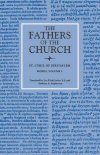
The Works of Saint Cyril of Jerusalem, vol. 1
- Author: Cyril of Jerusalem
- Translator: Leo P. McCauley
- Series: Fathers of the Church
- Publisher: Catholic University of America Press
- Publication Date: 1969
- Pages: 240
Cyril’s life of some seventy years, placed in the very center of the fourth century, epitomizes much that was characteristic of the period and the locale. Bishop of Jerusalem for nearly forty years, he experienced three expulsions from his see, these due as much to politico-ecclesiastical rivalry as to his participation in the contemporary theological controversies, in which Cyril played an important and still disputed role. The present volume carries about half of the bishop's most valuable production, a series of catechetical lectures for Lent and Easter week.
The introductory lecture (the Procatechesis) admitted the catechumens to the instructions to follow. Of these, the Catecheses proper, the first twelve appear in this first volume, the remaining six, with the five Mystogogical Lectures (for Easter Week), are in volume 2. The conferences are based firmly in the sacraments and in the successive articles of the Creed. It is upon the Creed and the various forms of it with which Cyril was involved that much of the extended Introduction centers. Cyril’s body of catechetical lectures, which has been called “one of the most precious treasures of Christian antiquity,” can make a telling contribution to the catechetical renewal within the Church of today and to the study and devotion of clergy and layfolk alike.
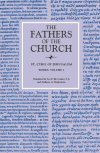
The Works of Saint Cyril of Jerusalem, vol. 2
- Author: Cyril of Jerusalem
- Translator: Leo P. McCauley
- Series: Fathers of the Church
- Publisher: Catholic University of America Press
- Publication Date: 1969
- Pages: 276
Cyril’s life of some seventy years, placed in the very center of the fourth century, epitomizes much that was characteristic of the period and the locale. Bishop of Jerusalem for nearly forty years, he experienced three expulsions from his see, these due as much to politico-ecclesiastical rivalry as to his participation in the contemporary theological controversies, in which Cyril played an important and still disputed role. The present volume carries about half of the bishop's most valuable production, a series of catechetical lectures for Lent and Easter week.
This volume includes the remaining six lectures for catechists and the five Mystogogical Lectures.